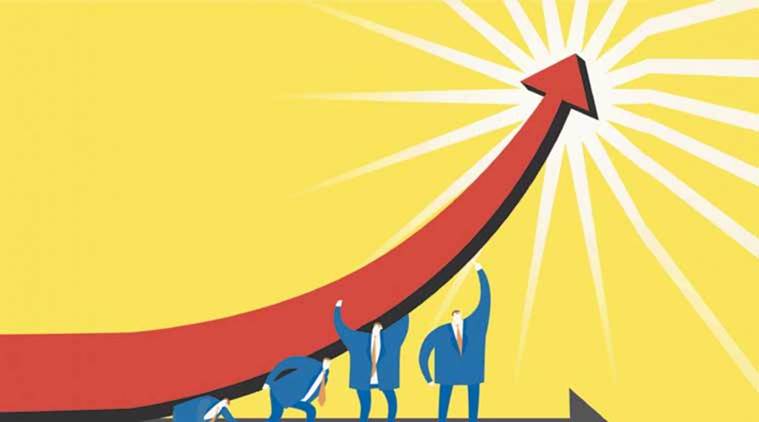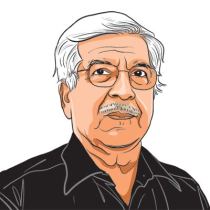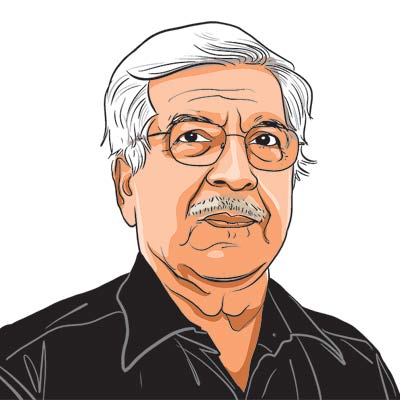The Upward Push
Increase in infrastructure spending will place the economy on road to higher growth.

India seems to be at a stage where an increase in infrastructure spending by raising fixed capital formation in the public sector will push the economy to a higher growth path.
India’s growth rate at around 7 per cent annual makes it a high growth economy. But the inflation rate is just below 5 per cent and is expected to stay there. This then means the interest rate has to be kept at around 7 per cent. The RBI refuses to take chances and at that rate the inflow of funds is maintained with occasional hiccups because nowhere are such returns available. With the late monsoon, sowings are down and the yield effect will be two per cent.
The MET is as variable as the weather and has insisted for long on it being a normal kharif until it was untenable and then grudgingly conceded, after Skymet said this monsoon was below normal with an evolving El Nino. The MSP increase was moderately good as compared to last year apart from cane, where the fall was hidden by changing the accounting recovery rate: A manoeuvre which didn’t impress anyone.
The so-called 50 per cent increase added to costs was a no-brainer. The government’s advisers were right in claiming that it was a 50 per cent increase in paid out costs plus family labour. But that meant rental and capital charges were excluded. The more sophisticated experts in the Niti Aayog said these were unearned incomes and so must be excluded. But the industrial and corporate sector is allowed to keep unearned incomes carrying scarcity returns. So why not the kisan? Besides the terms of trade are again moving against agriculture, a trend which M S Swaminathan had in his Farmers Commission used to recommend a more inclusive cost formula.
An economic commentator advising the government has chastised others and the larger business community for using current prices — gross investment series show a fall from 31.3 per cent of GDP to 28.5 per cent. He has called it a fake analysis. In constant prices, it is absolutely correct to point out that the investments have done reasonably well, given the inheritance bequeathed by the UPA. The investment share in GDP in real terms (2011/2012 prices) was 34.3 per cent in FY 2012, 32.6 per cent in FY 2014 and after reaching a low of 30.3 per cent in FY 2016 is now back at 31.4 per cent. But, forgetting about the UPA and NDA, even according to this series at constant prices, investment has fallen by 1.2 per cent of GDP. This year’s trends, in which we are hoping for recovery, have disappointed further.
The real issue is whether India can raise investment levels back to around 34 per cent of GDP, which the Niti Aayog has been wanting. The delayed monsoon and the spike in food prices necessitated that the interest rate is kept high. While the GDP from the manufacturing sector has been showing a reasonable rate of growth, the index of industrial production is again stuttering. The March figures show an improvement but since then the growth rate have again gone down.
Public investment shares have fallen more and the decline in private investments has been relatively less. India seems to be at a stage where an increase in infrastructure spending by raising fixed capital formation in the public sector will push the economy to a higher growth path. The problem seems to be that in a pre-election year, this does not seem to be the agenda. The Mehul Choksi episode has been a setback. But that is more a matter of the investigating agency doing their work rather than economic policy. India needs to reinforce faith in the competitiveness of labour intensive Indian exports and skills that underline them. But the more important issue is nudging the macro economy upwards.
We are doing well. We need to do better.
The writer, a former Union minister, is an economist
For all the latest Opinion News, download Indian Express App
More From Yoginder K. Alagh
- Sowing SlogansMSP is important, but real issues are markets, first-stage processing and supply chains...
- The More Things ChangeEconomic priorities set in Planning Commission in 1970s-80s continue ..
- Mending The FrameIt is time the pattern of training, system of evaluation, of civil servants is debated..








































No hay comentarios:
Publicar un comentario